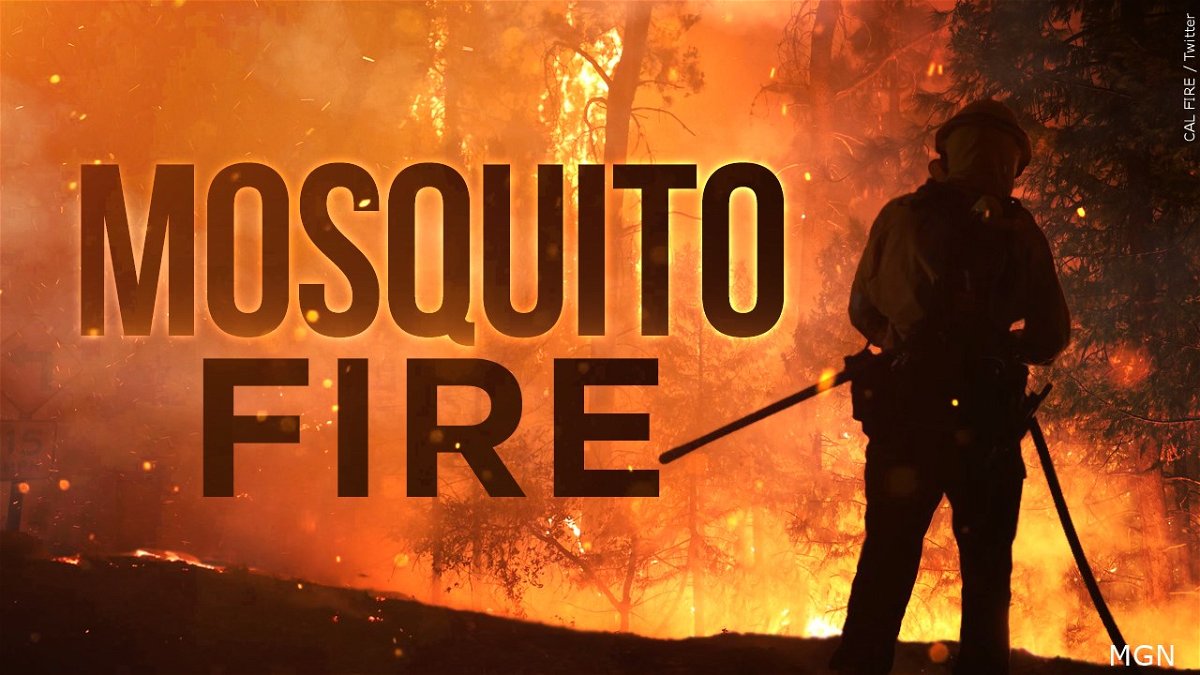California’s Mosquito Fire prompts more evacuations as it races toward mountain communities, burning homes and cars in its path

By Nouran Salahieh, CNN
(CNN) - The Mosquito Fire burning in Northern California flared up Tuesday afternoon, charging toward a mountain community and torching more homes as it burned dangerously close to a high school.
The inferno -- the largest wildfire currently burning in California -- began west of Lake Tahoe amid extreme heat September 6 and has already consumed about 50,330 acres in El Dorado and Placer counties. It was 25% contained Tuesday night.
Burning intensely and spreading deeper in the Sierra Nevada mountains, the fire has forced more than 11,200 people to flee as it threatened thousands of structures, burning 46 structures by Monday, including at least 25 homes, according to Cal Fire.
By Tuesday afternoon, the fire pushed toward the community of Foresthill and arrived at the edge of Foresthill High School, torching structures across the street as firefighting aircraft raced to drop flame retardant over the raging blaze.
Aerial video from CNN affiliate KCRA showed the flames burning a row of cars and structures under thick, black smoke.
It was not immediately clear how many buildings and vehicles were lost in the flare-up, but firefighters appear to have kept the flames away from Foresthill High School, Cal Fire Public Information Officer Scott McLean told CNN.
Though firefighters were aided by calmer weather over the weekend, stronger southwest winds blew into the region Tuesday, breaking up a smoke inversion that had for days hung over the Mosquito Fire.
As the trapped smoke cleared in the afternoon, the flames exploded, and a spot fire jumped the Middle Fork of the American River on the west corner of the fire's perimeter and ran toward Foresthill, ripping through critically dry fuels and steep terrain.
Flames advanced from the El Dorado County side back into Placer County, below the communities of Todd Valley and Foresthill, Cal Fire Operations Section Chief Landon Haack said during an evening briefing.
Firefighting resources that were trying to stop the fire's spread in other areas were diverted to help hold the line below the community, authorities said.
"They've got a pretty significant firefight going on out there right now as we speak. They're trying really hard to hold that fire in that box right there," Haack said.
The fire had jumped an area with twists and turns in the river where the wind swirls and pushes smoke and embers, Cal Fire fire behavior analyst Jonathan Pangburn explained in the briefing.
Additional evacuations were ordered Tuesday afternoon, including for the community of Stumpy Meadows, according to the El Dorado County Sheriff's Office.
The Mosquito Fire continues to push steadily to the east in heavily forested areas with extremely dry vegetation, officials said.
Before winds cleared the smoke Tuesday, it created unhealthy air quality in the region due to a high concentration of particulate matter from the fire in the air.
The smoke rolled past state lines and into Nevada, where the U.S. Air Quality Index reported "very unhealthy" air quality.
The fire is one of many burning across the West that are choking the air with smoke. More than 800,000 acres have burned in 93 large active fires and complexes across the West, according to the National Interagency Fire Center.
In Oregon, the lightning-sparked Cedar Creek Fire has quadrupled in size since last week, burning about 92,548 acres as of Tuesday and was still burning with 0% containment.
Fires are burning in parched lands amid a relentless drought
Frying under rising temperatures, drought-ravaged Western states are home to growing areas of easy-to-burn dry brush that can become fuel for more volatile wildfires.
The fires are also burning amid a water shortage emergency that is forcing residents to limit outdoor watering as California's reservoirs shrink.
In the Golden State, residents are contending with unprecedent water restrictions. The Metropolitan Water District for the first time ever declared a water shortage emergency in April, limiting outdoor watering for millions of residents in dozens of cities in Southern California.
For the third month in a row, Los Angeles residents cut their water usage last month to an all-time low for any August on record, despite temperatures that were an average of 3 to 5 degrees warmer, the city's mayor Eric Garcetti said.
Los Angeles residents' water usage in August was 10% lower than in the same month in the past two years, according to Garcetti.
"In the face of monthly heat records, Angelenos have gone above and beyond to find additional ways to cut back -- and as we continue to battle skyrocketing temperatures and cope with drying reservoirs, I know that Los Angeles will continue to show our region and the rest of the world what meaningful conservation looks like," the mayor said in a statement.
The-CNN-Wire
™ & © 2022 Cable News Network, Inc., a Warner Bros. Discovery Company. All rights reserved.